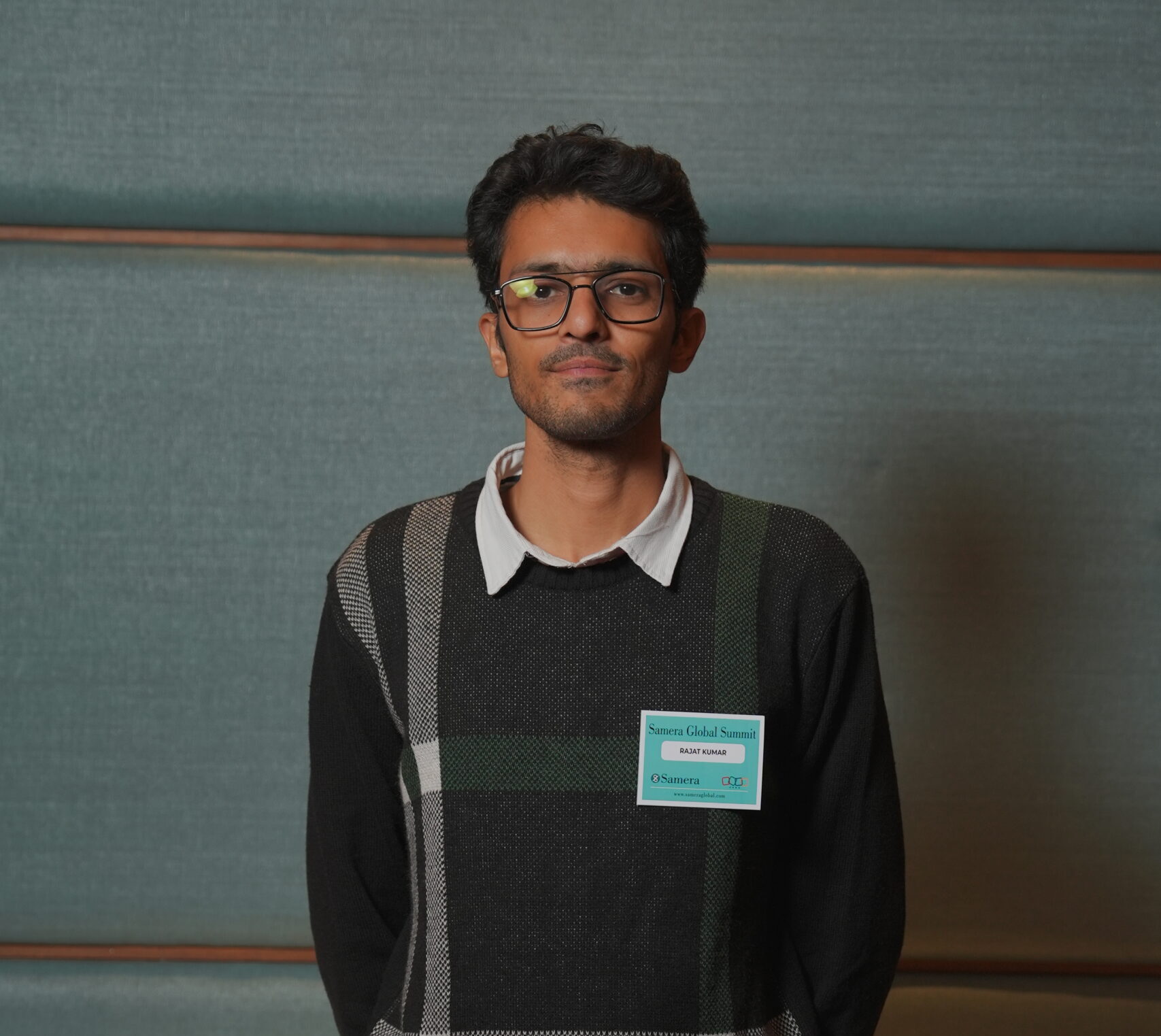How Indian GCCs Will Reshape Global Talent Strategy
In September 2025, the U.S. government announced a steep increase in the fee for new H-1B visa petitions. The one-time fee will be US$100,000 for new visa applications (not for renewals or existing visa holders) [1]. For many U.S. employers, especially Indian IT and software services companies that depend heavily on sponsoring foreign talent, this raises the cost of deploying skilled workers in America by an order of magnitude.
For context:
- Indian firms may face US$150-550 million extra immigration costs due to this fee hike. [2]
- India accounted for about 71 % of H-1B visa beneficiaries in FY2025 [3].
- Meanwhile, the number of Indian students in the U.S. has reached record levels. In the academic year 2023-24, there were about 331,602 Indian students [4], making India the top country of origin for international students. More than half of international graduate students pursued STEM fields; OPT/STEM OPT participation also saw strong growth.
This policy shift imposes real costs and will force U.S. companies and Indian students and workers to rethink strategies. One key lever that looks likely to gain even greater prominence is the GCC model: companies leveraging large talent bases in India (or other low-cost/high-skilled locations) to deliver services globally, rather than moving as many people under H-1B to the U.S.
In this article we make 4 bold predictions about how this change will ripple through the industry, the workforce, and education. For firms and educational institutions in India, understanding these implications will be important.
Prediction 1: GCCs Will Evolve from Cost Centers to Global HQs
With the $100,000 fee per new H-1B petition, U.S. companies will find it much more expensive to bring in foreign skilled workers. To control costs and maintain agility, they will increasingly rely on offshore teams, particularly GCCs in India, rather than sending people under H-1B.
Practical Impact
- Shift in Workload: Roles that were earlier transitioned to the U.S. will now stay with Indian GCCs. This is already happening with nearly 50% of Indian GCCs now having end-to-end product delivery mandates [5], going beyond coding and testing to include system design, compliance, and customer delivery.
- Contractual Re-orientation: U.S. firms will increasingly structure contracts around India-based delivery. Instead of sending people onshore, more projects will be owned entirely out of GCCs.
- Decision-Making Moves East: As GCCs take on end-to-end delivery, responsibility for decision-making will also migrate. Indian teams will be expected to exercise greater autonomy.
Changes to Expect
This shift will require GCCs to invest in leadership depth, stronger governance, and client-facing capabilities. Remote collaboration infrastructure will become non-negotiable, as cross-border teams need secure and seamless operations. Hybrid models will persist, but the balance of power will tilt offshore. Indian hiring patterns will also change, with growing demand for mid-management talent and specialized domain experts, not just junior engineers.
Takeaways for Firms
- Audit which roles in your U.S. teams are largely administrative or remote-manageable and plan migrating them to your centers in India.
- Build talent pipelines in India not just for coders/engineers but for architecture, project leadership, client management, accounting and finance etc.
- Invest in process standardization, communication coordination, and governance between U.S. HQs and Indian GCCs to maintain quality.
Prediction 2: A Restructuring of How Student-STEM-to-H-1B Pipelines Function
Indian students have been a key source of STEM talent for U.S. companies. They come on F-1 student visas, often stay via OPT or STEM OPT, and then get sponsored via H-1B. In fact, Indian students made up 48% of all STEM OPT participants in 2024 and nearly half of those benefited from the STEM OPT extension [6].
With H-1B sponsorship becoming much more expensive, companies may become more selective or reduce the scale of sponsorships, especially for early-career hires. Also, some students may choose alternatives.
Practical Impact
- Reduced Sponsorship Appetite: With the steep rise in visa costs, companies will be selective about sponsoring fresh graduates. Early-career Indian STEM students may face lower chances of securing an H-1B after OPT.
- Shifts in Student Decision-Making: Prospective students may reassess the return on investment of U.S. degrees. Some may look at Indian or alternative global institutions where immigration risks and costs are lower.
- New Hiring Models: Firms that once relied heavily on U.S. campus recruitment may pivot toward remote internships, offshore hiring, or campus outreach in India.
Changes to Expect
This dynamic will reshape how students plan their careers. While U.S. universities may struggle to sustain international STEM enrolments at current levels, Indian institutions could gain by strengthening industry partnerships.
For firms, the student-to-H-1B funnel will shrink, leading to greater reliance on Indian centers for early-career talent. Over time, this may even elevate the status of Indian campuses as primary recruitment grounds for global companies.
Takeaways for Firms and Educational Institutions
- Firms should communicate clearly with student communities in India about career pathways, sponsorship likelihoods, and alternative options.
- Universities (both in India and the U.S.) should strengthen programs that prepare students for remote/hybrid work, collaboration with global teams, cross-cultural competence.
- Educational institutes in India may develop more bootcamps or programs aligned with U.S. firm needs, so that students are “plug-and-play” with GCCs.
Prediction 3: A New Talent Economy Will Emerge Around GCCs
For decades, the default pathway for Indian tech professionals was study or start out in India, move to the U.S. under H-1B, and then grow into senior roles onsite. That pipeline is now far less attractive for both employers and employees. U.S. firms face higher costs, and Indian professionals see diminishing odds of sponsorship.
This creates space for a new talent economy to take shape, one where GCCs in India become the nucleus for high-value work, senior roles, and long-term careers. Rather than being a stepping stone to the U.S., Indian centers will become the destination in themselves.
Practical Impact
- Budget Reallocation: Instead of spending heavily on visas, companies will channel budgets toward local U.S. hires or scaling offshore teams. This rebalancing will reshape compensation structures.
- Automation Acceleration: To reduce dependency on high volumes of skilled workers, firms will turn to automation and AI for tasks that are repeatable and transactional.
- Rising Talent Competition in India: As more advanced roles shift to GCCs, salaries in India for engineering, data science, and architecture roles will rise, intensifying the war for top talent.
Changes to Expect
The H-1B will lose its status as the “golden ticket,” while high-growth GCC roles in India will gain prestige. The net result will be a dual strategy: automation for efficiency and Indian workforce expansion for capability. Wage inflation in India is likely, but the gap versus U.S. costs will still favor GCCs.
Zinnov research hints towards the silver lining here: more than 480 mid-market GCCs now operate in India, employing over 210,000 professionals. Despite their smaller size, many of these centers are leading product development, platforms, and innovation work, areas once dominated by large GCCs [7].
Companies will increasingly demand not just technical skills but also leadership, project management, and client-facing competence from India-based staff. Over time, this could push GCCs up the value chain, as they become trusted hubs for higher-order functions.
Takeaways for Firms:
- Map your cost per hire for H-1B vs cost of offshoring that role fully or partially. Use models to compare total costs (salary + visa fees + travel + overhead).
- Anticipate stronger competition for top engineering, data science, and architecture talent in India. Be ready to pay more (but still lower than the U.S.) and provide growth paths.
- Build programs around automation and efficiency; invest in AI tools that support distributed teams.
Prediction 4: GCCs Become Strategic Hubs for Innovation
Historically many GCCs were established with cost arbitrage in mind. With the H-1B cost structure shifting, they will increasingly be seen not simply as cost centers but as strategic hubs for innovation, product development, R&D, vertical domain specialization. Indian GCCs that evolve in capability will gain access to higher margin work.
Practical Impact
- End-to-End Product Ownership: GCCs will be asked to lead product development cycles, from design and user experience through to deployment and support.
- Elevation of Senior Roles: More senior engineers, architects, and domain experts will be hired in India, shifting leadership responsibilities away from the U.S. core teams.
- R&D and IP Development: Companies will push Indian GCCs into contributing to patents, research collaborations, and innovation labs, not just delivery.
Changes to Expect
GCCs will no longer be evaluated only on efficiency but also on innovation outcomes. Good news for engineering research & development firms is that numbers show, from 2020-25, the setup rate of ER&D GCCs in India has grown nearly 1.3X faster than the GCC sector overall, showing a shift toward higher-value, innovation-led work [8].
To keep up with this pace, firms will need to invest in partnerships with universities, build local R&D infrastructure, and prioritize intellectual property generation in India. The long-term outcome is that GCCs will gain credibility as true centers of excellence, integral to global product roadmaps.
Takeaways for Firms:
- Firms should audit which parts of the product development lifecycle can be shifted or co-led out of India. Then plan for capability building: hire senior talent, R&D staff, invest in labs.
- Indian GCCs should build internal culture, career paths, incentives to retain high-quality talent who want to do R&D / innovation work, not just execution.
- Forge partnerships with Indian universities, research institutions to tap into innovation.
Conclusion: From Cost Shock to Strategic Inflection
The H-1B fee hike is more than a one-time cost increase. It marks an inflection point in how global talent flows will be shaped in the coming decade.
What is worth thinking about is this: if global corporations stop seeing India only as an “overflow pool” for U.S. roles and instead treat it as a primary hub of innovation, leadership, and intellectual property, the country’s position in the global value chain could look very different by 2030.
For firms, it means building GCCs as hubs for strategy, execution, and innovation. For students, it means rethinking the U.S. education-to-H-1B route and preparing for careers that come to them in India. For policymakers, it means strengthening infrastructure, regulations, and education to sustain this shift.
Finally, while the visa landscape will keep shifting, resilient organizations will continue to reduce dependency on policy volatility and embed capability where talent is abundant. That is the real strategic lesson of the H-1B hike and the opportunity GCCs in India are uniquely positioned to capture.
Bibliography
- https://www.theguardian.com/us-news/2025/sep/19/trump-h1b-visa-100000-fee
- https://timesofindia.indiatimes.com/business/india-business/us-h-1b-visa-fee-hike-indian-it-firms-facing-150-550-million-in-immigration-bill-know-all-about-it/articleshow/124045035.cms
- https://www.reuters.com/world/india/analyst-view-trumps-h-1b-visa-fee-hike-puts-focus-skilled-tech-labor-access-2025-09-22
- https://timesofindia.indiatimes.com/education/news/70-of-indian-students-choose-stem-fields-abroad-here-is-why-europe-is-their-first-option/articleshow/114696265.cms
- https://gcc.economictimes.indiatimes.com/news/industry-trends/indias-global-capability-centres-driving-innovation-and-economic-growth/122968780
- https://www.ice.gov/doclib/sevis/btn/25_0605_2024-sevis-btn.pdf
- https://zinnov.com/centers-of-excellence/indias-mid-market-gccs-are-outpacing-the-big-guys-heres-why-blog
- https://www.accaglobal.com/content/dam/ACCA_Global/professional-insights/gcc-india/Global%20capability%20centres%20in%20India_final%20report.pdf


